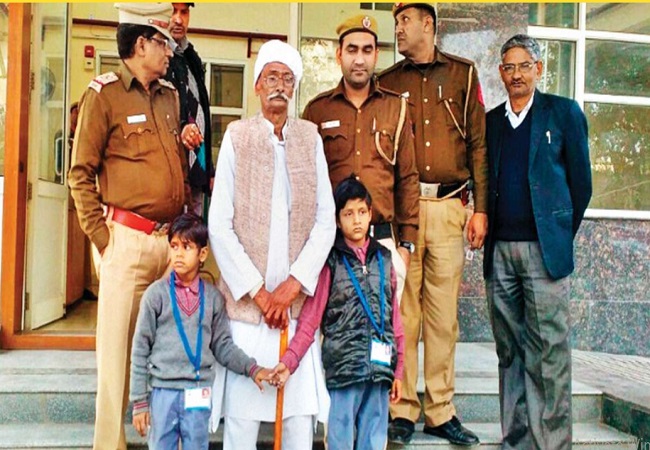New Delhi: In metropolitan cities like Delhi, incidents like child abduction/kidnapping or even snatching has become a big menace in last few years. On a daily basis, as per estimates, about 17 children go missing in the city. To address this menace, Delhi Police Commissioner SN Shrivastava launched a new initiative last month, under which the police officials who trace the missing children are either rewarded or given out-of-turn promotions. Surprisingly, this initiative is yielding great results, as numbers show on paper.
According to data provided by Delhi Police, the daily recovery and rescue of missing children in Delhi has gone up almost three times between August 7 and 28, as compared to period from Jan 1 to Aug 6. The promotion order was issued on August 7.
Delhi Police chief had issued an order saying any constable or head constable who finds at least 50 missing children aged below 14 in a year would be eligible for an out-of-turn promotion.
In his tweet, SN Shrivastava wrote, “In the last two months only, 724 children aged below 18 years, have gone missing. Of these 537 have been rescued. Those police officers who rescue 50 missing children in 12 months will be given out of turn promotions. It will help in preventing such crimes,” the commissioner tweeted in Hindi.
पिछले दो महीने में ही 18 साल से कम उम्र के 724 बच्चे लापता हुए यद्यपि इसी दौरान 537 बरामद भी हुए। वे पुलिसकर्मी जो 12 महीने में 50 बच्चे बरामद करेंगे उन्हें बारी से पहले पदोन्नति प्रोत्साहन के रूप में दिया जाएगा। इससे अपराध रोकने में मदद मिलेगी।@LtGovDelhi @HMOIndia @DelhiPolice pic.twitter.com/iVrVKJGL3j
— CP Delhi #DilKiPolice (@CPDelhi) August 9, 2020
How Police team crack missing children case
Though the initiative is still in early phase, Delhi Police personnel are deploying many means to solve missing children cases. In a few cases, they took photograph of missing child and showed it to people on railway stations, hospital and night shelters.
In fact, those personnel posted in police control room, who don’t venture out to probe cases, received distress calls and in turn located at least 20 children and reunited them with their families.
Soon, this scheme will be firmed up. A special team in every police station will have officers comprising two constables, one head constable and a sub-inspector, dedicated to crack missing children cases. The team will report to the ACP. Many police stations in south and south-east districts have already formed their special teams following the order.
Special stress is on finding children aged 14 or below since many of them fall prey to traffickers, said police officers.
Missing children drive, a brainchild of Police Commissioner SN Shrivastava
The drive to trace missing children is a brainchild of Police Commissioner SN Shrivastava, who announced it in the first week of August.
Currently, a constable gets a promotion after 5 years in service, subject to his or her clearing the test. If the person does not appear for the test, he/she will require 10 years to become a head constable.
But, if they who rescue 50 missing children aged below 14 years in 12 months, they will be given out of turn promotions. Also, those who recover at least 15 missing children below 14 years — of whom 5 are less than 8 years old, they would be considered for the Asadharan Karya Puraskar (AKP) with a reward of Rs 20,000.
How grim is ‘missing child’ menace in Delhi
According to a report by the Delhi Commission for Protection of Child Rights (DCPCR) released last year, 17 children go missing every day in Delhi and at least two of them remain untraced. As per police statistics, at least 6,366 children went missing in 2019 from across the city, of whom police traced 4,311.
According to the Union Ministry of Woman and Child Development’s tracker, around 20 children go missing in Delhi every day, of which six are traced.
The most vulnerable police station areas are those in the border districts such as Narela, Shahbad Dairy, Jaitpur, Vijay Vihar, Khajuri Khas, Dabri, Uttam Nagar and Mehrauli. Last month, police rescued missing children from roads, outside temples, gurdwaras, hospitals and railway station.

